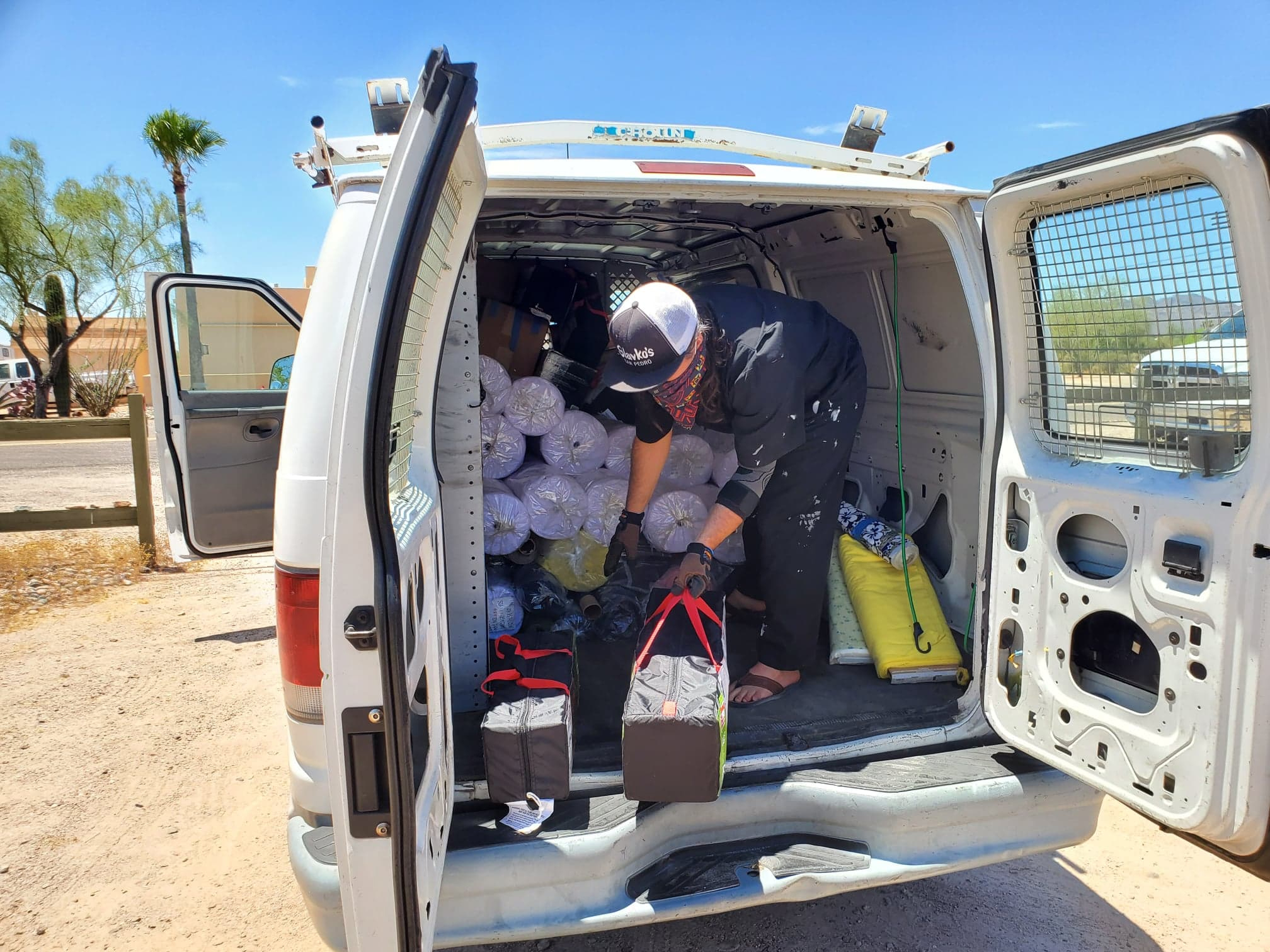Changes in the Air: Reflections on My Pandemic Year
My work was changing already before the pandemic. After years of nonprofit administration, exhibition-making, and residency hosting on-site in full-time leadership positions, my practice went mobile and came home at the start of 2020. I went from going to a job every day to going to different jobs on different campuses, working between Westwood, downtown Los Angeles, and my house. What carried me at the start of the pandemic was writing and editorial work. My classes went remote, and my exhibitions were all delayed, but demand for writers and editors has only increased. In a sense, everyone is having to work like we do now, making space for our work in our homes and daily lives, pitching themselves to the market, working from job to job. This past year has highlighted the degree of privilege and security that I do have because I am mid-career and can command a reasonable salary and health benefits even as a part-time professor. It is also amplifies the ways that the communities of which I am part are feeling stuck. The popular uprisings of the spring and the ongoing social justice conversations they have advanced are very much present in the work that I do, whether as an educator, curator, or writer. I am motivated to work in the cultural space by these concerns. What I am seeing is that we have another, less visible crisis on our hands, which is that everyone’s mental health is in a terrible state. This might be a result of our toxic political discourse or it might be a cause; it is hard to say. Right now my politics are about motivating young people to feel empowered to make changes before they get trapped in our dysfunctional, collapsing adult society. I have always struggled with how to define myself as a scholar, because my scholarship is made to feel so peripheral within institutions of study. I do not work in archives; I work in the spaces that represent all the histories that the archive leaves out. My space is the synapse in the network, the afterimage that follows the broadcast. I feel that poetics are essential to advance interpretation when the historical record has been expunged. I have been struck by how every aspect of our intensely classification-based culture has become interchangeable—how communism is run by capitalists now, how white heterosexual men use the language of oppression. Pepe the Frog becomes a symbol for the US alt-right, and then the Hong Kong pro-democracy movement. When so much of our cultural expression is meme-based, is social media a scholarly medium? This is the real digital turn, not the transition to Zoom-based learning.
I have been a scholar of media art and culture for my whole career, so the shift to online did not feel completely unnatural except for the abruptness of it. Again, mental health has been the biggest challenge. My students are tech-savvy, and they helped me adapt to the online learning environment. In exchange, I have tried to adapt to them: not to be too rigid, to change up assignments or due dates or even point values to help them succeed. Rather than treating the university as a place that weeds people out after they put everything they have into getting there, we should be empowering students to thrive by doing whatever they ask us to do that is still fair to everyone else. I hope that when we return to in-person learning, the generosity of allowing students to bring their whole selves and all their needs into the learning environment will be something that we allow to remain.

As I noted at the start, one of the changes that the pandemic has wrought is that more people are having to hustle and be resourceful to make their work while integrating it into their everyday lives, just as artists do. Artists just keep on doing what they do best, solving problems creatively. A good example is Lauren Halsey’s Summaeverythang Community Center (summaeverythang.org), which has been distributing free produce boxes throughout Watts and South Central Los Angeles for the duration of the pandemic. Another is Kristina Wong’s mutual aid network, Auntie Sewing Squad (ASS) (auntiesewingsquad.com), which has been sewing and distributing masks to frontline workers, Indigenous communities, and others in need for the past year (fig. 1). I have spoken with some of the ASS volunteers, and something that comes up is how disappointed and angry everyone is with the total failure of public leadership and the expectation of individual responsibility. I think rather than processing, we will be looking at a reckoning when everything opens back up again.
Cite this article: Anuradha Vikram, “Changes in the Air: Reflections on My Pandemic Year,” in “American Art History in the Time of Crises” Colloquium, Panorama: Journal of the Association of Historians of American Art 7, no. 1 (Spring 2021), https://doi.org/10.24926/24716839.11931.
PDF: Vikram, Changes in the Air
About the Author(s): Anuradha Vikram is Visiting Faculty in the Department of Art, University of California Los Angeles

